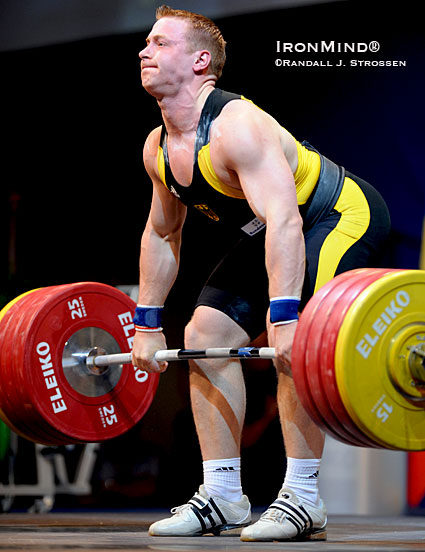Weightlifting Pulls VS Deadlifts
Sorry for the long silence. I had alot of writing in other forms to be done and I am slowly getting those out of the way. So I am back with something which is of my area of interest (Olympic Weightlifting and Strength Training). Today I am going to make a comparison between two forms of exercises: the traditional deadlift and the weightlifting pull. Basically they are almost the same exercises but one is a more strength-oriented movement while the other has a power element added onto it.
Start Position
Both the weightlifting pull (be it snatch grip or clean grip) and the traditional deadlift have a similar start position:
- Feet should be hip width or shoulder width apart and set with mid-foot in line with the barbell.
- Hips and knees are flexed to adopt the start position.
- Back should be kept flat.
- Eyes should focus ahead.
- Shoulders should be over the bar.
Execution of Movement (Ground to Knee)
This is where it would be taught differently by different coaches. The explanation for the movement of the deadlift can be found here. So this is more for the weightlifting pull. This is how I learnt it and how I teach it:
- Back should remain flat while bar gets lifted off the ground.
- Trunk angle in relation to the ground while bar gets lifted off the ground should remain similar through the movement.
- Shoulders should still be over the barbell as much as possible.
- Legs should be initiating the movement and knee extension should be greater than hip extension especially at the point when the bar gets lifted off from the ground to knee level.
- Barbell should be traveling straight up in a vertical directon.
Movement (Knee to Completion)
This is where the differences in the movements occur. For both movements, this portion is important because it determines the ability to put force or power out in the lift.
In the deadlift:
- The bar carries on travelling close to the body.
- The hips are brought forward and extended along with the knees.
- KEY POINT: The knees do not shift forward while the hips are extending to engage hamstring and glute activation.
In the weightlifting pull:
- The bar also carries on travelling close to the body.
- As the hips extend, shoulders are still kept over the bar.
- KEY POINT: Without actively flexing the knees, the knees actually shift forward while the torso of the lifter begins to get more upright with hip extension.
- Position at this point should be similar to that of the bottom of a countermovement jump.
- To complete the movement, triple extension of the joints (namely the hips, knees and ankles) should mimick a jump without leaving the ground.
- Coming up onto your toes, a forceful shrug is added to extend the movement of the second pull.
Position to be in to complete the weightlifting pull. Picture from Ironmind.
So in terms of the two movements, the point after the bar reaches the knees, the emphasis on adaptation changes. The amount of force output after the knees is going to be high for both movements. However, the key points of the movements would be different because of the position of the joints. In the deadlift, it is predominatly hip extension to complete the movement while in the weightlifting pull, the lifter adopts the power position which then allows for all three lower limb joints to be involved in generating the force. Thus, in terms of movement speed, the deadlift is going to be slower past the knees but the weightlifting pull has the element of power production particularly after the knees.
Picture from Ironmind.
Hope this makes a clearer definition between the traditional deadlift and the weightlifting pull.
Stay Strong and Keep Pulling,
The Training Geek.


